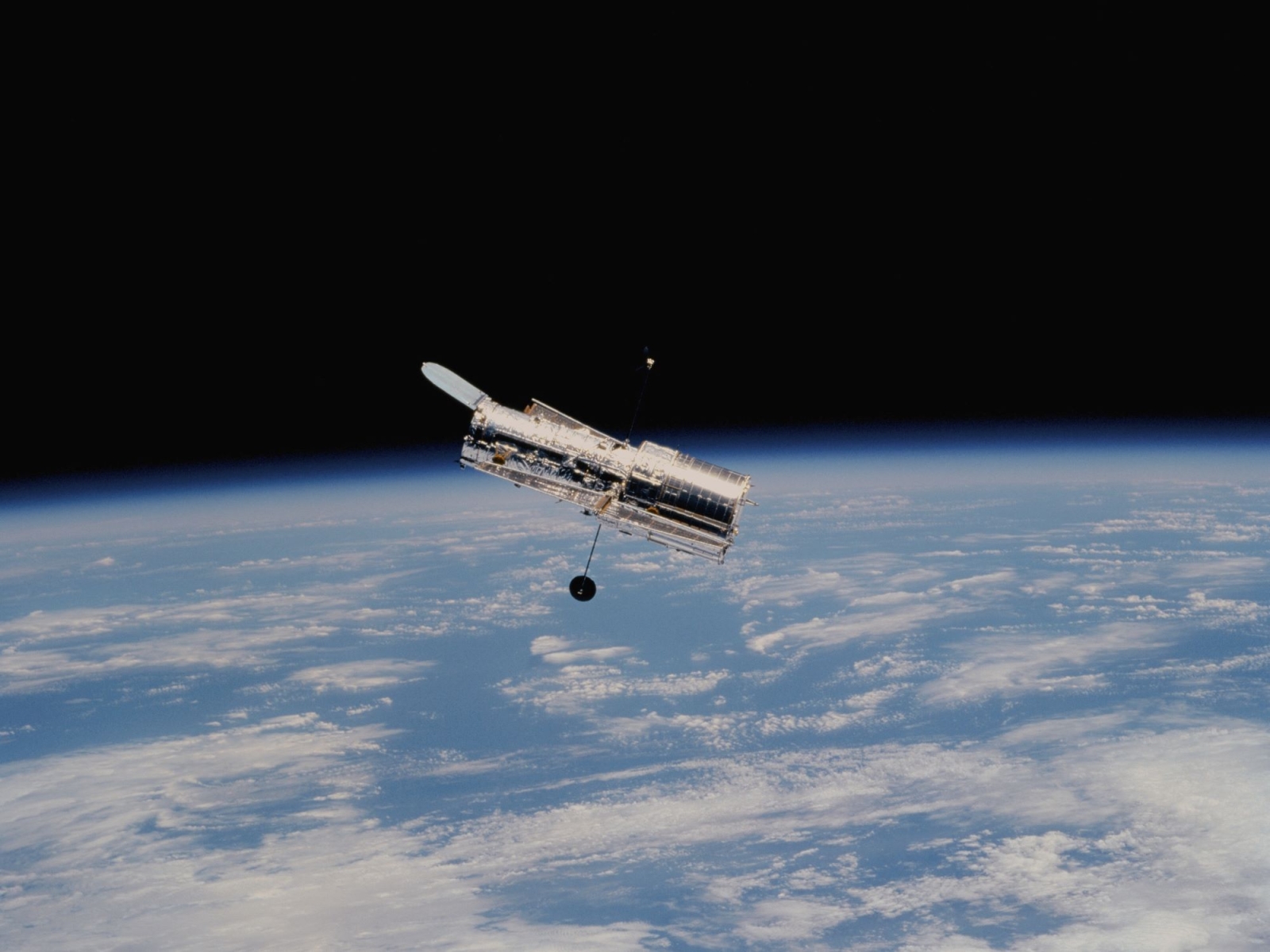On November 3, 2023, a 6.4 magnitude earthquake struck Karnali province in western Nepal. Immediately after receiving the news, the Nepalese Ministry of Home Affairs asked Sentinel Asia to send remote sensing data: information captured by satellite sensors capable of monitoring and capturing high-resolution images. Activating this service enabled Nepalese rescue teams to accurately identify affected areas and plan the emergency phase with targeted interventions.
In the past, people used to believe divine will was the culprit behind natural disasters, and all that was left to do was to pray. Today, the huge stream of satellite data constantly bombarding us from space is so valuable that it allows us to predict and mitigate the effects of natural disasters. The use of satellite services for risk management and analysis is a front in which all the world's major government space agencies have been investing for some time.
Earthquake alert in Nepal and Japan
One of the fruits of this effort is Sentinel Asia, an organization established in 2005 at the initiative of the Asia-Pacific Regional Space Agency, which shares near real-time satellite information about major disasters affecting Asian countries washed by the Pacific. From volcanic activity to floods, cyclones to wildfires. In the management cycle of any disaster, there are several phases in which satellite services can find application and utility.
“To date, Sentinel Asia has been particularly successful in facilitating the exchange of satellite data between the space agency and the authorities after a disaster has occurred,” Koji Suzuki, executive director of the Asian Disaster Reduction Center, tells Renewable Matter. “However, there are other phases in the disaster management cycle, such as preparedness through early warning systems, hazard mitigation, and reconstruction, that can make a difference and on which we are focusing efforts.”
If, due to increased media attention, funds and policy decisions mostly tend to favor the emergency response, it is more difficult to catalyze resources for the preparedness and risk mitigation phases. Remarkable in this is Japan, which, given its high levels of seismicity, has become one of the most advanced countries in prevention. In fact, a national plan was launched in 2013 with the aim of making buildings more resilient to earthquakes and developing dedicated facilities for post-earthquake management. In addition, to raise awareness, communication campaigns and collective exercises were promoted to be replicated during the emergency.
Regarding early warning systems, there are two types of prediction through which the Japan Meteorological Agency notifies of danger: one can hypothesize earthquakes even a week away, and the other sends an immediate alert to citizens before tremors of a certain magnitude hit buildings. All thanks to data picked up by the more than 2,000 sensors scattered across the country.
The problem, however, is that we still cannot accurately predict the power of the earthquake and thus the eventual hazard. “To date, several research centers are working on a forecasting system that can also measure scale,” adds Koji Suzuki, “but it has only achieved 50% accuracy.” In a country where there are about 1,500 quakes a year, it has been very complicated for Sentinel Asia to set a standard alert threshold.
Rebuilding flood-ravaged Pakistan
It was August 2022 when Sentinel Asia satellite images captured the most devastating flood in Pakistan's history, capable of putting nearly 30% of the country under water and killing more than 1,700 people. With more than 8 million people displaced and incalculable damage, today the reconstruction program coordinated by the World Bank is trying to map the most affected areas and select the most urgent interventions.
Satellite data is provided and processed by the CIMA Foundation, an international environmental monitoring center that studies mathematical models to improve flood prevention and beyond. As early as the 2010 floods, the foundation collaborated with the World Meteorological Organization to help Pakistan spend the substantial aid provided by the international community in a targeted manner.
“With the technologies of the time, covering such a vast territory was a huge effort,” says Roberto Rudari, program director for CIMA. “Today, after a lot of work and investment in innovative tools, we are capable of almost fully automatic, continuous monitoring over an area as large as the whole of Pakistan.” This is why the World Bank, which is coordinating the reconstruction program after the 2022 flood, has asked CIMA to integrate flood monitoring data with population density and infrastructure data. Authorities will then have the ability to prioritize the most affected villages.
Monitoring, forecasting and alert system
If the flood of 2022 was particularly disastrous, the monsoon rains of August 2023 also caused severe flooding, causing the Sutlej River to overflow and submerge hundreds of villages in Punjab province. Dams that were supposed to contain the thousands of cubic meters of water discharged into the river from Indian reservoirs (also struggling with the rains) gave way.
Real-time monitoring of the condition of these infrastructures is certainly part of hydrometeorological hazard mitigation activities that, especially in Pakistan, can save lives and prevent extensive damage. “For some infrastructure, such as levees and dams, it is possible to implement continuous monitoring,” Rudari adds. “For example, in the Netherlands, ground-based sensors that work in tandem with satellite sensors are employed.”
The danger, however, also exists while monitoring the infrastructure around the clock. That is why dedicated citizen alert systems, such as the one developed by Google in 2018, are important. FloodHub is an artificial intelligence-based platform that enables locally relevant river flood forecasts up to 7 days in advance, indicating when and where they will occur in 80 countries. The technology combines the hydrological model, which predicts the amount of water flowing in a river, and the flood model, which predicts which areas will be affected and how deep the water will be.
Mapping forest fires in Greece
If Pakistan is grappling with increasingly violent monsoon rains, in recent years Greece has had to contend with devastating forest fires that are regularly turning Hellenic summers into endless nightmares. Exacerbated by intense droughts, the 2021 fires have burned particularly in Attica, a region where FireHub, an alert system that can map the areas most at risk, has been activated as many as 14 times.
“We developed an artificial intelligence-based model that integrates data provided by Copernicus [the European Union's Earth observation program, ed] with the archive of all fires that broke out in Greece from 2010 to 2020,” Stella Girtsou of Beyond, the Greek research center that together with the National Observatory of Athens designed FireHub, tells Renewable Matter. “We exploit several indices and parameters such as vegetation status, altitude, wind, and humidity to map at high resolution the areas most at risk. So, when a fire breaks out, it immediately triggers an alarm.”
With 95% accuracy, the system monitors the spread of fires and provides predictions on how they will develop over the next few hours. “In addition, with the aid of images coming from satellites closer to Earth, we draw polygons that circumscribe the affected area, to facilitate the work of the firefighters,” Girtso points out. “We are also working on incorporating human accident causalities into the models, trying to figure out which hotspots near population centers are where a person, voluntarily or not, can start a potentially dangerous fire.”
A satellite call for public administrations
Experiences such as FireHub are not well known in public administrations. Raising awareness of the issue is the task of Eurisy, an association founded by the European Space Agency (ESA) to promote the use of satellite solutions for risk analysis of natural disasters. “We develop awareness campaigns for public administrations and civil protection,” comments Annalisa Donati, secretary general of Eurisy, “Our goal is to create a bridge between space applications and society.”
By organizing workshops and meetings, Eurisy introduces municipalities to some of the services that the Copernicus Emergency Service makes available upon simple request. Rapid Mapping, for example, provides geospatial information to map areas at risk of fire or flooding to support emergency management activities. Galileo, on the other hand, is a global satellite navigation system of the European Union. Entirely designed for civilian use, it can detect with an accuracy of less than 10 centimeters those people in distress who are difficult to locate during search and rescue operations.
This satellite data, integrated with machine learning technologies, provides policymakers and civil defense bodies with objective and timely information. Valuable for preventing, mitigating, and responding effectively to 21st century natural disasters. Increasingly intense, increasingly frequent.
DOWNLOAD AND READ ISSUE #48 OF RENEWABLE MATTER ON AI & TECH
This article is also available in Italian / Questo articolo è disponibile anche in italiano
Image: Nasa, Unsplash
© all rights reserved



